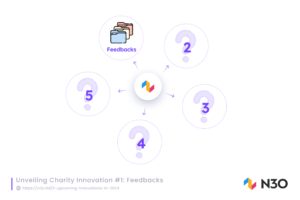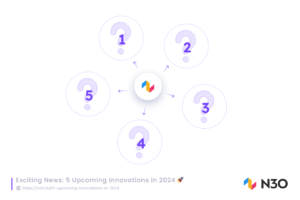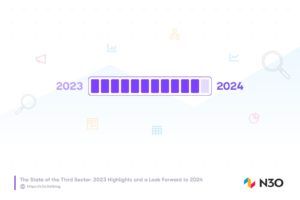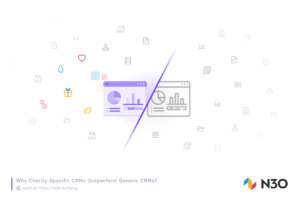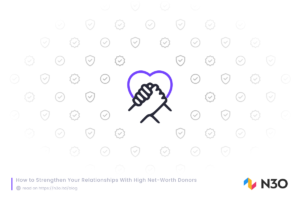Expanding your charity into new locations is a hot topic at the moment.
As organisations look for new markets to increase fundraising or to expand their presence, it’s clearly on an upward trend.
In a recent report by the Giving USA Foundation, total charitable giving to US charities has risen 4% in 2021 to $484.85 billion.
A report commissioned by Philanthropy services AG found “the charitable sector in France raises €9.62 billion and is more reliant on donations from private donors (36%) than any other country in the report…” (SiftungSchweiz, 2021).
As a result, UK-based charities are registering entities in other locations like the US or Europe as part of their growth strategy. In fact, we at N3O have spoken to some non-EU charities who are seeking advice on setting up new fundraising entities in the UK.
With this in mind, apart from legally registering the charity, opening a local bank account and choosing a suitable governance model, what considerations are needed from a technical standpoint?
1) Ensure a strong foundation from the get-go
If fundraising in a new location, a priority is to ensure you have the relevant systems/infrastructure to manage the data collected. This is important to ensure you comply with local laws and regulations (e.g. GDPR), but also to maximise your fundraising efforts.
It is very likely charities will hold physical fundraising events in key locations, visit high-net worth donors and generally establish grass-roots presence.
Having a system ready means the charity in the first 3 months of fundraising can:
- Ensure all donors and contact details are recorded from every interaction (event, website visit, HNW-donor etc).
- Send immediate thank you letters to all contacts or gift certificates to your £500+ donors.
- Get immediate visibility on what projects you’ve raised for. Be quick off the mark when allocating projects abroad.
- Distribute sponsorship packs for regular donors, hitting their email minutes after they have donated.
- And more…
Without a system, donor interactions can be hap-hazard and growth sluggish which can impact the small window of opportunity with new donors.
From the beginning therefore, it is advised new entities have:
- At least one individual as an administrator
- A robust CRM to collect and analyse key data.
From our experience, this will help charities abide by local rules and regulations whilst also fuelling growth.
2) Consider your payment gateways
This is the flexibility of your CRM to incorporate different payment gateways. This is a key consideration as the payment gateway is key to collecting donations smoothly.
Though we see Stripe being used by a large number of charities worldwide, not every charity will use them for various reasons. Different locations have different gateways which need to be considered e.g. In Canada, an Opayo gateway cannot be opened, whilst in France or Germany local gateways may need to be integrated.
Ensuring you have a CRM provider which has the flexibility to cater/integrate these different gateways is key.

3) Utilise an out of the box charity-centric CRM
Whether an organisation has just started or has surpassed £8 million yearly income, they both need relatively the same functionality to operate efficiently.
It’s important to source a CRM which can provide a robust system for collecting donations, operate your water-well programmes and manage donors effectively in any new market you operate.
We don’t advise trying a custom-build in a new market as the costs can very quickly spiral!
Ideally a model where a new charity-focused CRM can be spun up in new location at a fraction of the cost of a custom build. Examples may include our own Engage CRM at N3O or even Donorfy’s offering.
First, the onboarding cost will be cheaper as you will have no data to migrate. Secondly, as the number of users and income will be initially very low, this would impact on the monthly subscription cost.
Only if the fundraising begins to flourish and increase, would monthly subscription fees increase.
4) Uniformity is important as you expand
For CEO’s and senior management, an important element during expansion is uniformity. It is much safer from a governance and reporting perspective to have similar systems/processes being followed globally.
A classic example is using the same website platform and CRM integration infrastructure across different locations. If you use different content management systems (WordPress for the UK website and Umbraco for German websites), it can quickly become hard for your IT support team to manage upcoming bugs and reporting discrepancies.
Consistent systems strengthen your organisational operating model as your staff are using the same system, report on the same income metrics and can train teams internally. Other elements to consider on this point are:
- Multi-currency – Ensure your systems are multi-currency in order to report on the local currency and other currencies as necessary.
- Try to avoid one system for all countries – Some organisations may have registered entities in multiple countries but feed all donor data into one system. We advise against this for a number of obvious reasons. It would be best to spin up new, low-cost CRM’s for each registered entity and manage them individually. They would use the same infrastructure (CMS, CRM etc), but they would be independent subscriptions.
We have found from experience, that if done well from the outset, organisations also avoid a number of compliance issues.

5) Supplement with training and processes
It’s a known fact that technology itself is not the silver bullet. From our experience, for those organisations who want to ensure synergy with the ‘parent’ HQ or just transfer good practice to an independent, then investment in process-workflows and training is key.
Ensure to establish processes from the HQ office of the following:
- Pre-defined MOU’s and Funding agreements.
- TOR’s between the HQ and new entity (e.g. clear nature of the relationship)
- Process flows for key activities e.g. starting new projects, sending/receiving funds, how to co-fund a project together etc.
- The delegation of authority (DOA) – if applicable.
- If it’s a large entity, then RACI matrices help to solidify roles and responsibilities.
Once the above is formulated, then all relevant team members should be trained. Ideally, each entity should have 1 or 2 CRM champions who will be comfortable with most admin functions of the system. They will also act as trainers for any new staff members and will work closely with the HQ.
Regular bi-monthly meetings should also take place between the entities and minutes/action points recorded.
—
At N3O we are helping a number of charities expand their global presence. This accelerates fundraising and establish a presence generating new fundraising opportunities.
Feel free to get in touch at https://n3o.ltd/contact-us/ and hear how we can help your organisation.
Alternatively, you can ring us on +44 333 0165 225
To sign up for our newsletter for all the latest insights on charities and CRM’s, fill in the below:

